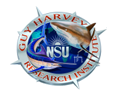Shark Tagging
Before releasing a shark, we often plant a small tag at the base of its dorsal fin. The tag is a small plastic capsule attached to an even smaller stainless steel dart. The dart is inserted just under the skin of the shark and the very visible capsule trails on the outside. Inside the capsule is a note in a five languages that states “if found please contact….” And then it has the address and phone number for the National Marine Fisheries Service in Rhode Island.
The Cooperative Shark Tagging Program was created in 1961. Since then thousands of fishermen and scientists have been tagging and releasing sharks to help researchers better understand and manage these incredible fish. Over the years recapture information has given scientists valuable data about shark migrations, travel patterns, fishing pressure, mortality figures, growth rates and so much more. This knowledge can be an invaluable tool to marine managers who must set catch limits and area closures for sharks.
A few interesting returns I’ve had over the years include a blue shark off Spain, sandbars off Mexico, Cuba, and Louisiana, and two different hammerheads that were caught a year or so later by friends of mine. I once caught a tiger in the morning and then again in the afternoon of the same day. Another time we tagged a blue shark one-day and caught the same fish the next day 16 miles away. There was also a mako we caught in March off the Florida Keys that was taken that summer up here off Ocean City. I guess he followed us home!
Occasionally a biologist rides along with us to plant electronic tags. These tags communicate with satellites and allow researchers to track the sharks after release and provide information on movements and post-release survival.
"Captain Sampson's experience and reputation have made him a sought-after lecturer, demonstrator, writer, and guide for shark tagging and other offshore fishing techniques. This is a unique, hands-on event—don’t miss out on an exciting day on the water!"
** The National Aquarium's annual shark tagging trip was voted Baltimore Magazine's Best Adventure in 2010! The National Aquarium's Marine Animal Rescue Program (MARP) rescues, rehabilitates, and releases sick and injured marine animals.The National Aquarium's Marine Animal Rescue Program (MARP) rescues, rehabilitates, and releases sick and injured marine animals. The Aquarium Conservation Team (ACT!) works to restore and protect habitats locally and globally.









